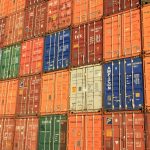Image courtesy Treasury Wine Estates
by Meg Riley
The Australian wine industry breathed a sigh of relief last week after the Chinese Ministry of Commerce (MOFCOM) announced late on Thursday that it would lift the tariffs on Australian wine exports into China, a decision that was effective as of Friday 29 March. As a result of this decision, the Australian Government dropped its case against China with the World Trade Organization. Prior to the imposition of the duties, mainland China was Australian wine’s most valuable export market.
Whilst the announcement is positive news for many producers, industry leaders warn that the return of free trade with China will not solve the industry’s woes.
The Australian Government welcomed MOFCOM’s decision, saying that the result reinforced its “calm and consistent” approach to the trade conflict. In a joint statement to media on Thursday 28 March, Prime Minister Anthony Albanese, Foreign Minister Penny Wong, Minister for Trade and Tourism Don Farrel and Minister for Agriculture, Fisheries and Forestry Murray Watt thanked Australian grapegrowers for their “fortitude and support” throughout the tariff dispute.
“The Australian Government’s approach is to cooperate with China where we can, disagree where we must and engage in our national interest – the outcomes on barley and wine reflect that approach,” they said.
However, even the government statement was careful to acknowledge the importance of not hanging all hopes on the China market.
“Trade diversification is a key element of the Government’s trade policy strategy,” said the statement. “The Government will continue to support Australian businesses to sell their world-class products on the global stage.”
Industry leaders welcome tariff decision
Industry groups were quick to welcome the return of free trade of Australian wine between China and Australia, although many advised wine businesses to proceed with caution.
Wine Australia CEO Dr Martin Cole said opportunities remain for Australian wineries looking to export to China.
“Mainland China remains an important market for the Australian wine sector. Over many years, Australian wine companies have developed close relationships with importers, buyers and consumers of Australian wine in China and these relationships remain important to our wine community. Pleasingly, we know that trade and consumer sentiment for Australian wine in China remains positive,” said Cole.
“However, the wine market in mainland China is different now to what it was at the end of 2020. Wineries seeking information to re-enter the market are encouraged to review the Export Market Guide, market insights and sign up for information about upcoming activities at wineaustralia.com.
“We will support the Australian wine sector to re-enter the market through a coordinated set of activities and advice on market requirements, while continuing our market diversification efforts in other markets,” said Cole.
“This is a very important decision for the Australian wine industry,” said Australian Grape & Wine CEO Lee McLean.
“It reflects the positive outcome of diplomatic efforts by the Albanese government to stabilise relations with China and underscores the importance of collaboration between government and industry.
McLean thanked the Australian Government for its support, and said that AGW would continue to work closely with the government and Wine Australia as the industry re-establishes itself in the Chinese market.
“We look forward to seeing Australian wines back on Chinese dining tables and rejuvenating our relationship with customers and business partners in that market,” said McLean.
“We will also, however, be maintaining our focus on diversifying our export footprint and growing demand here in Australia as well.”
In South Australia, the damage done by the tariffs still casts a shadow on producers’ plans for the future. In October 2020 $946.5 million of SA wine was exported to China, but that figure plummeted after the introduction of tariffs, sitting at less than $3 million in January 2024.
“This decision is important and highlights the ongoing strengthening of Australia’s trading relationship with China, for the mutual benefit of both countries,” said Kirsty Balnaves, president of the South Australian Wine Industry Association (SAWIA).
“South Australian wine businesses understand that the China wine market has changed since the import duties were imposed. In-market competition for wine is now much stronger than before, meaning that there are increased choices for consumers at various price points,” said Balnaves.
“In addition, alcohol consumption has declined, and opportunities for consumption, such as events, have reduced. South Australian wine exporters will need to visit the market to assess the market opportunity, create awareness, provide education, and re-introduce their wines to consumers – this will take time.
“However, Chinese consumers remain familiar with South Australian wine, as many of our wine producers have visited the market numerous times prior to 2020, and more recent trips have highlighted the strong positive sentiment and deep impression SA wine has made on the Chinese consumer.
In light of the tariff development, South Australia’s Premier Peter Malinauskas announced a $1.85 million package to support SA grapegrowers and wine exporters to re-enter the China market. The package will include 100k for exporter capability workshops, and investments in trade missions, export advice and fostering trust and goodwill between the markets.
Riverland Wine CEO Lyndall Rowe said the tariffs had particularly impacted the region’s growers and producers, with many struggling to find buyers for significant volumes of red wine varieties.
“The export tariffs were catastrophic for our industry, and restoring the Chinese market will make a significant difference for our growers and producers who have struggled to find buyers, battled to sell their grapes for a reasonable price and have had to hold excess volumes of wine in tanks,” Rowe said.
“This is a positive step forward for our Riverland growers, and we are looking forward to rebuilding relationships with Chinese buyers and restoring the market over the coming months and potentially years.
“However, we are also conscious of the fact that this will take time and it won’t solve the challenges our Riverland growers face in the short term. Market diversification is essential, which is why we are working to build the reputation of the Riverland as a region in Europe and in other markets.”
In Western Australia, state WA Premier Roger Cook said he was “thrilled” to learn of China’s wine tariff removal.
“WA wines are world renowned, and I’m pleased that producers will now be able to re-engage with this important market,” said Cook.
“Since 2021, the State Government has worked with closely with producers and exporters to support this valuable industry.
“We will continue to work with them to re-establish key relationships and promote their products in China.”
Prior to the introduction of tariffs, China was WA’s largest overseas wine market with 2.1 million litres of wine exports to China in 2019-20, valued at $18.3 million and representing 38 per cent of the state’s wine exports. China remains WA’s largest agrifood and beverage export market, representing more than 18 per cent of the state’s total agrifood and beverage exports in 2022-23.
Minister for Regional Development in WA, Don Punch, said the news would spell “a great boost to our valuable wine industry.”
Across the country in New South Wales, China is the state’s largest two-way goods trading partner, with an estimated value of $56.9 billion in 2022-23.
As the second largest wine-producing state in Australia, the NSW wine industry employs roughly 50,000 people, and the removal of the tariffs has prompted the NSW Government to engage a number of initiatives that will assist companies with market re-entry.
NSW Minister for Industry and Trade Anoulack Chanthivong said the State Government was “ready to roll out proven programs” to aid producers re-entering the export market, but noted that conditions had changed significantly since 2020.
“We understand that the market has changed, and conditions will be different this time around,” said Chanthivong. “Our focus will be to support NSW wineries to understand the new environment, re-enter the market and re-establish export pipelines.”
Mark Bourne, president of NSW Wine Industry Association, said that NSW wine producers had formed “strong relationships” with the valuable export market in the past.
“The opportunity to do business again on a level playing field and re-engage with Chinese wine lovers new and old, is definitely the good news producers were hoping for from this review.”
Producers’ perspective
Bruce Tyrrell, managing director, Tyrrell’s Wines, celebrated the tariff removal as “the best news the Australian wine industry has had in a long time.”
“The Chinese people love Australian wines so I think we could have a pretty big start to the re-entry into the market,” said Tyrrell. “Our industry badly needs that to happen.”
Andrew Kay, CEO at The South Australian Business Chamber, has spent over 20 years in the wine industry, including as the managing director of Wirra Wirra. His enthusiasm at the news was tempered.
“While no one can guarantee how the Chinese market will respond, it is unlikely we will return to the halcyon days, at least in the short term,” said Kay.
“It is important we learn from history and for South Australian wineries to view this news and their response from a strategic, rather than opportunistic perspective.”
Accolade Wines CEO Robert Foye was similarly measured, albeit eager to build on the company’s portfolio in China.
“While we do not anticipate a snapback to 2020 levels, we do see a sizeable opportunity for our business in China and we are excited about the long-term potential this market brings,” he said.
Andrew Calabria, sales and marketing director of Calabria Family Wine Group, said the removal of tariffs was an important step towards reigniting trade relations, and would “foster growth within our industry.”
“As an Australian wine producer, we understand the immense challenges faced by our industry due to the imposed tariffs,” said Calabria. “The past three years has shown the resilience and adaptability of our Australian winemakers, who have navigated the challenging market conditions.”
Calabria Family Wine Group anticipates renewed opportunity in China in light of the removal of the trade barriers.
“We look forward to once again delivering exceptional Australian wines to our valued customers and rebuilding trust in this significant market,” said Calabria.
Treasury Wine Estates (TWE) CEO Tim Ford said the news marked a momentous milestone for the Australian wine industry as well as partners and consumers in China.
“The removal of tariffs on Australian wine exports to China is terrific news and is cause for celebration across the Australian wine industry and with our partners and consumers in China,” said Ford.
“It’s testament to the continued stabilising of relations between both countries by the respective governments and the ongoing partnerships maintained between Australian businesses and our Chinese counterparts.”
“This announcement signals the start of our ramp up to re-establish our Australian luxury and premium wine distribution in China and it shouldn’t be too long before local Chinese consumers have more access to our great wines,” he said.
TWE also released a short video welcoming the announcement.
Prior to the tariffs, China was Australia’s largest wine export market valued at around $1.2 billion. In a release to media, TWE acknowledged that “whilst it will take time to rebuild given the changing environment and consumer preferences,” the news of the tariff removal was “still positive”.
“It’s fantastic news for the Australian wine industry and opens the door for renewed opportunities for local winemakers and growers, particularly in regional Australia,” said Ford.
According to Wine Australia data, Australian wine exports to mainland China peaked at $1.3 billion and 121 million litres in the 12 months ended October 2020. Since the introduction of the duties on Australian wine, exports to the market have fallen to 1.4 million litres valued at $10.1 million in the 12 months ended December 2023. The number of exporters to the market has also decreased from 2198 to 117 over the same period.
Total wine imports to China fell from 688 million litres in 2018 to 248 million litres in 2023 – a third of what it was five years ago, import statistics from Trade Data Monitor reveal. Trade Data Monitor statistics also show that the top four wine importing countries to mainland China of France, Chile, Italy and Spain all recorded significant declines in their exports in the 12 months ended December 2023.
Are you a Daily Wine News subscriber? If not, click here to join our mailing list. It’s free!





















